Shaohua Yue
Directivity-Aware Degrees of Freedom Analysis for Extremely Large-Scale MIMO
Dec 19, 2024
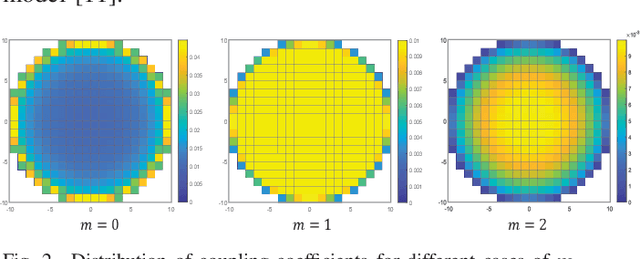
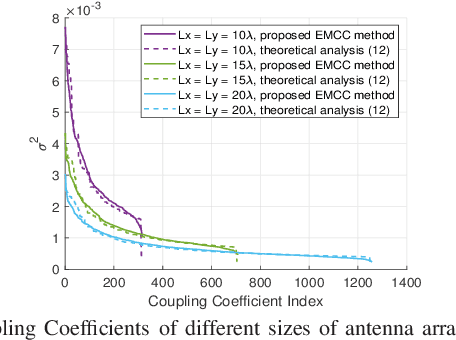

Abstract:Extremely large-scale multiple-input multiple-output (XL-MIMO) communications, enabled by numerous antenna elements integrated into large antenna surfaces, can provide increased effective degree of freedom (EDoF) to achieve high diversity gain. However, it remains an open problem that how the EDoF is influenced by the directional radiation pattern of antenna elements. In this work, empowered by the wavenumber-domain channel representation, we analyze the EDoF in a general case where the directivity of antennas, determined by the antenna structure and element spacing, is considered. Specifically, we first reveal the uneven distribution of directivity-aware wavenumber-domain coupling coefficients, i.e., channel gain towards different directions, in the isotropic Rayleigh fading channel. EDoF is then calculated based on such distribution of coupling coefficients. A numerical method is also provided to obtain coupling coefficients via electromagnetic full-wave simulations. Due to the influence of antenna directivity, how EDoF and ergodic channel capacity vary with the element spacing are explored via simulations for different antenna types.
Degrees of Freedom of Holographic MIMO in Multi-user Near-field Channels
Oct 07, 2024


Abstract:Holographic multiple-input multiple-output (HMIMO) is an emerging technology for 6G communications, in which numerous antenna units are integrated in a limited space. As the HMIMO array aperture expands, the near-field region of the array is dramatically enlarged, resulting in more users being located in the near-field region. This creates new opportunities for wireless communications. In this context, the evaluation of the spatial degrees of freedom (DoF) of HMIMO multi-user systems in near-field channels is an open problem, as the methods of analysis utilized for evaluating the DoF in far-field channels cannnot be directly applied due to the different propagation characteristics. In this paper, we propose a novel method to calculate the DoF of HMIMO in multi-user near-field channels. We first derive the DoF for a single user in the near field, and then extend the analysis to multi-user scenarios. In this latter scenario, we focus on the impact of spatial blocking between HMIMO users. The derived analytical framework reveals that the DoF of HMIMO in multi-user near-field channels is not in general given by the sum of the DoF of the HMIMO single-user setting. Simulation results demonstrate that the proposed method can accurately estimate the DoF in HMIMO multi-user near-field channels in the presence of spatial blocking.
Hybrid Near-Far Field Channel Estimation for Holographic MIMO Communications
Jul 17, 2024Abstract:Holographic MIMO communications, enabled by large-scale antenna arrays with quasi-continuous apertures, is a potential technology for spectrum efficiency improvement. However, the increased antenna aperture size extends the range of the Fresnel region, leading to a hybrid near-far field communication mode. The users and scatterers randomly lie in near-field and far-field zones, and thus, conventional far-field-only and near-field-only channel estimation methods may not work. To tackle this challenge, we demonstrate the existence of the power diffusion (PD) effect, which leads to a mismatch between the hybrid-field channel and existing channel estimation methods. Specifically, in far-field and near-field transform domains, the power gain of one channel path may diffuse to other positions, thus generating fake paths. This renders the conventional techniques unable to detect those real paths. We propose a PD-aware orthogonal matching pursuit algorithm to eliminate the influence of the PD effect by identifying the PD range within which paths diffuse to other positions. PD-OMP fits a general case without prior knowledge of near-field and far-field path numbers and the user's location. The computational complexity of PD-OMP and the Cramer-Rao Lower Bound for the sparse-signal-recovery-based channel estimation are also derived. Simulation results show that PD-OMP outperforms state-of-the-art hybrid-field channel estimation methods.
Channel Estimation for Holographic Communications in Hybrid Near-Far Field
Jan 16, 2024



Abstract:To realize holographic communications, a potential technology for spectrum efficiency improvement in the future sixth-generation (6G) network, antenna arrays inlaid with numerous antenna elements will be deployed. However, the increase in antenna aperture size makes some users lie in the Fresnel region, leading to the hybrid near-field and far-field communication mode, where the conventional far-field channel estimation methods no longer work well. To tackle the above challenge, this paper considers channel estimation in a hybrid-field multipath environment, where each user and each scatterer can be in either the far-field or the near-field region. First, a joint angular-polar domain channel transform is designed to capture the hybrid-field channel's near-field and far-field features. We then analyze the power diffusion effect in the hybrid-field channel, which indicates that the power corresponding to one near-field (far-field) path component of the multipath channel may spread to far-field (near-field) paths and causes estimation error. We design a novel power-diffusion-based orthogonal matching pursuit channel estimation algorithm (PD-OMP). It can eliminate the prior knowledge requirement of path numbers in the far field and near field, which is a must in other OMP-based channel estimation algorithms. Simulation results show that PD-OMP outperforms current hybrid-field channel estimation methods.
Intelligent Omni-Surfaces Aided Wireless Communications: Does the Reciprocity Hold?
Nov 06, 2022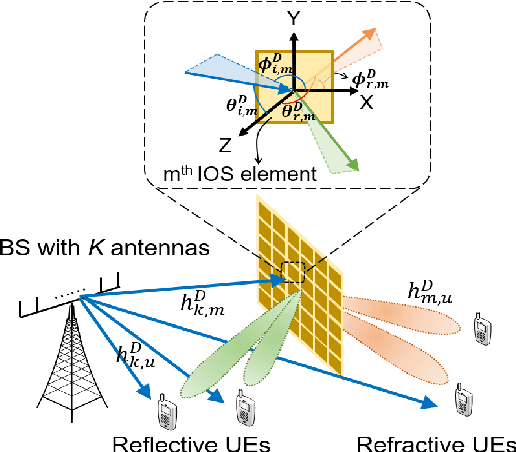
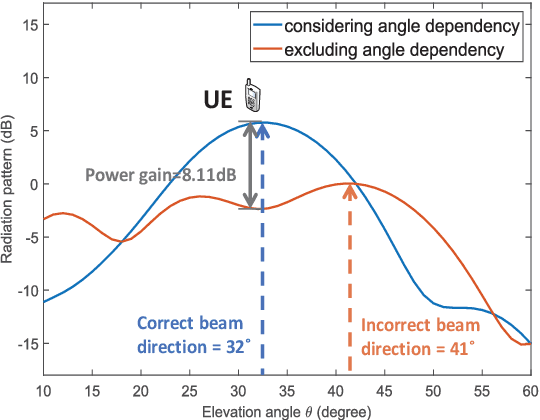
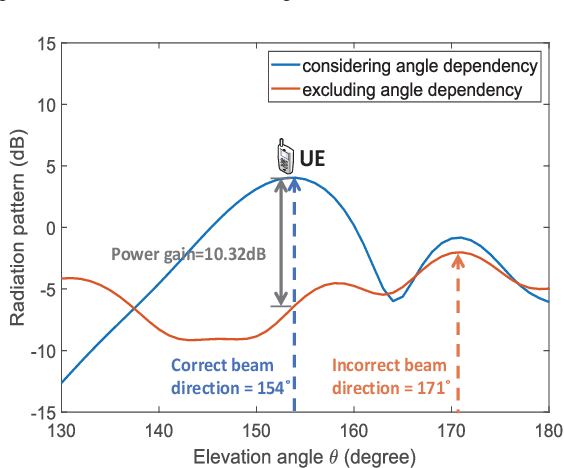
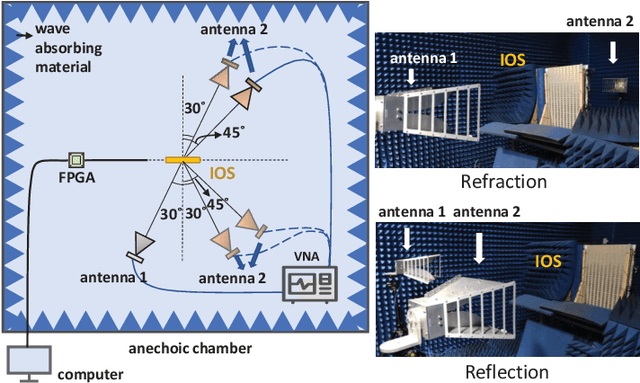
Abstract:Intelligent omni-surfaces (IOS) have attracted great attention recently due to its potential to achieve full-dimensional communications by simultaneously reflecting and refracting signals toward both sides of the surface. However, it still remains an open question whether the reciprocity holds between the uplink and downlink channels in the IOS-aided wireless communications. In this work, we first present a physics-compliant IOS related channel model, based on which the channel reciprocity is investigated. We then demonstrate the angle-dependent electromagnetic response of the IOS element in terms of both incident and departure angles. This serves as the key feature of IOS that drives our analytical results on beam non-reciprocity. Finally, simulation and experimental results are provided to verify our theoretical analyses.
 Add to Chrome
Add to Chrome Add to Firefox
Add to Firefox Add to Edge
Add to Edge